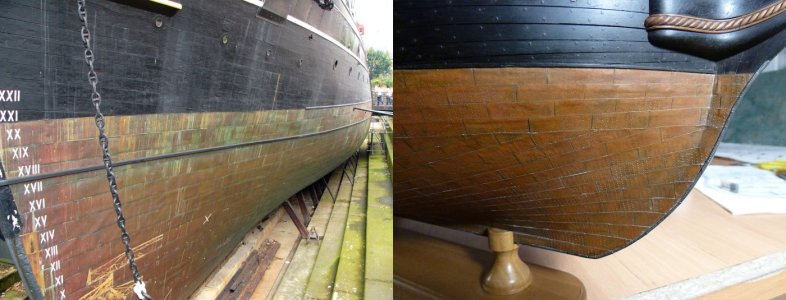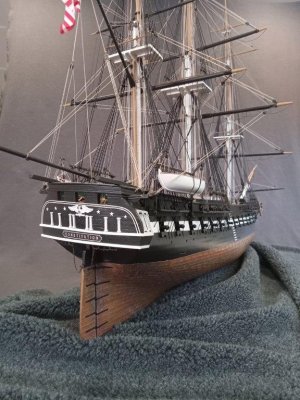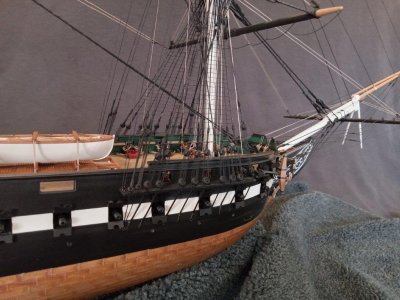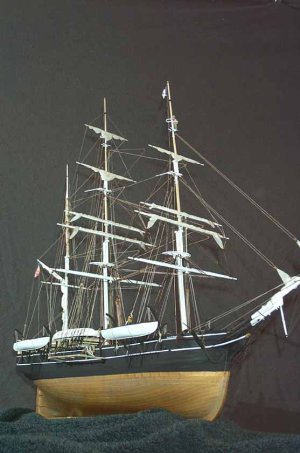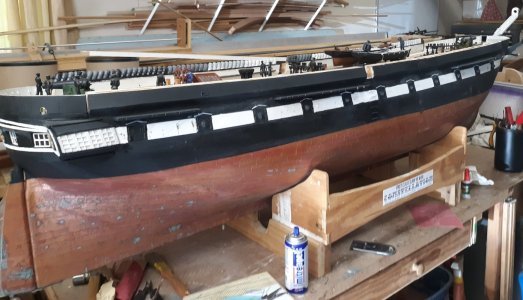I want to age the copper plating on my ship model, using the method from Dmitry Shevelev.
He used a copper-patinating solution called Patina-It. I once found it available in the U.S. at this link, but it’s no longer for sale. I’ve searched everywhere but haven’t been able to find it.
I’d greatly appreciate any help in locating this product—maybe someone in their own country has seen it, or can find it. I’d also be interested if there are any similar or alternative products available, as I’ve tried others but none achieved the same effect as Shevelev’s method, which I’ll describe below.

While I was writing this message, I found a single listing on this website, which wasn’t there until recently. The only concern is that, although the label and bottle look identical, the color of the liquid is drastically different… I’m tempted to take the risk and order it, but ideally, I’d like to find the exact same product that Shevelev used.
Here is a link where you can view a description of the patination process for copper sheathing using Dmitry Shevelev's method, within my main construction review thread.
Thank you for your assistance!
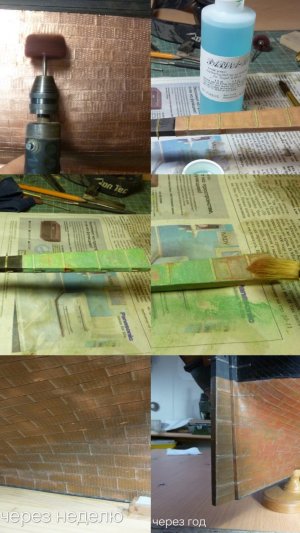
He used a copper-patinating solution called Patina-It. I once found it available in the U.S. at this link, but it’s no longer for sale. I’ve searched everywhere but haven’t been able to find it.
I’d greatly appreciate any help in locating this product—maybe someone in their own country has seen it, or can find it. I’d also be interested if there are any similar or alternative products available, as I’ve tried others but none achieved the same effect as Shevelev’s method, which I’ll describe below.
While I was writing this message, I found a single listing on this website, which wasn’t there until recently. The only concern is that, although the label and bottle look identical, the color of the liquid is drastically different… I’m tempted to take the risk and order it, but ideally, I’d like to find the exact same product that Shevelev used.
Here is a link where you can view a description of the patination process for copper sheathing using Dmitry Shevelev's method, within my main construction review thread.
Thank you for your assistance!





